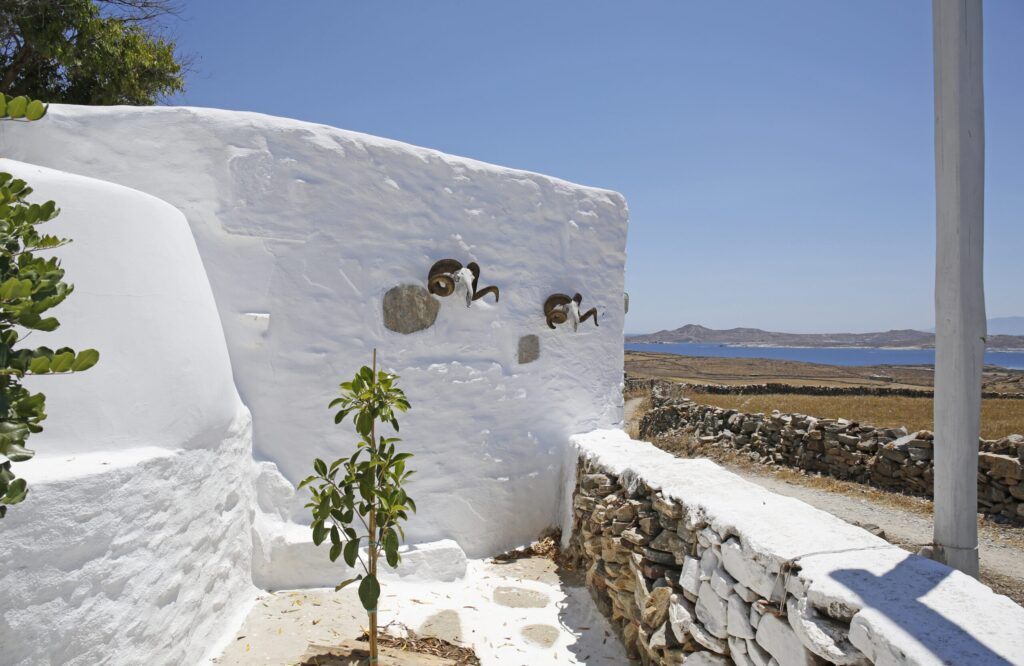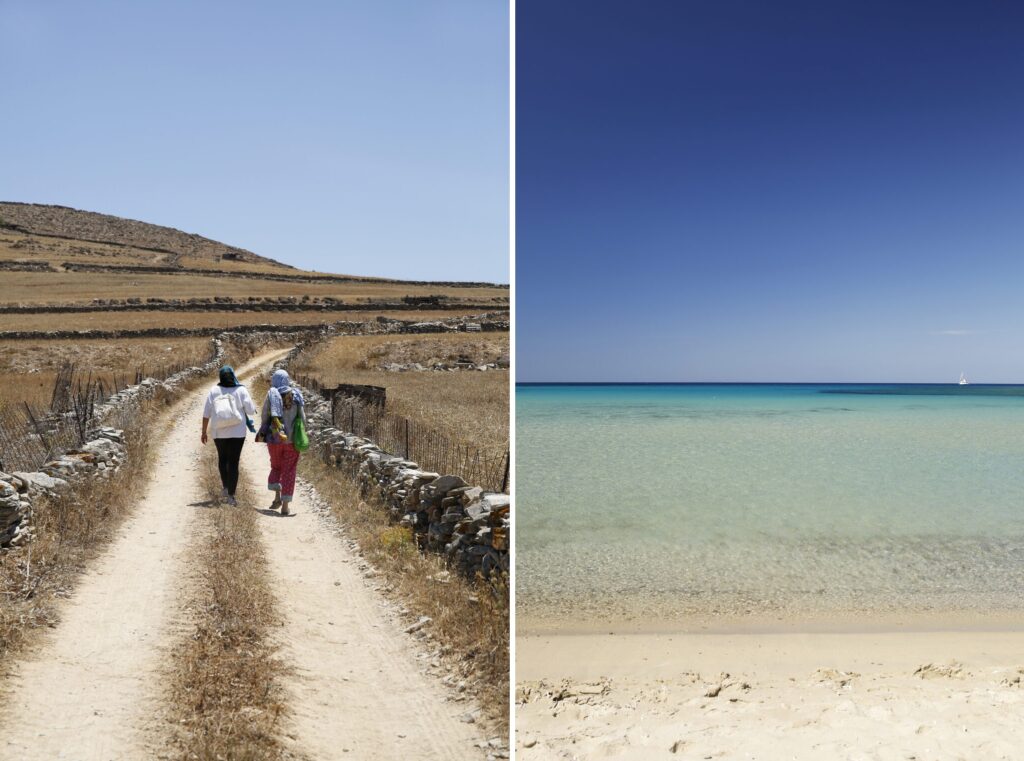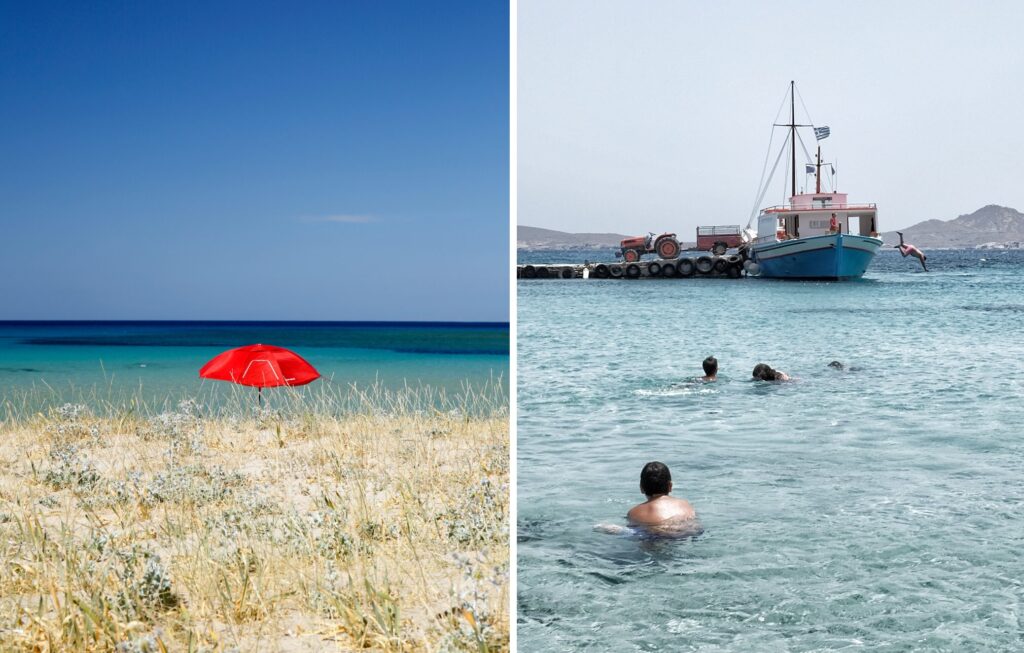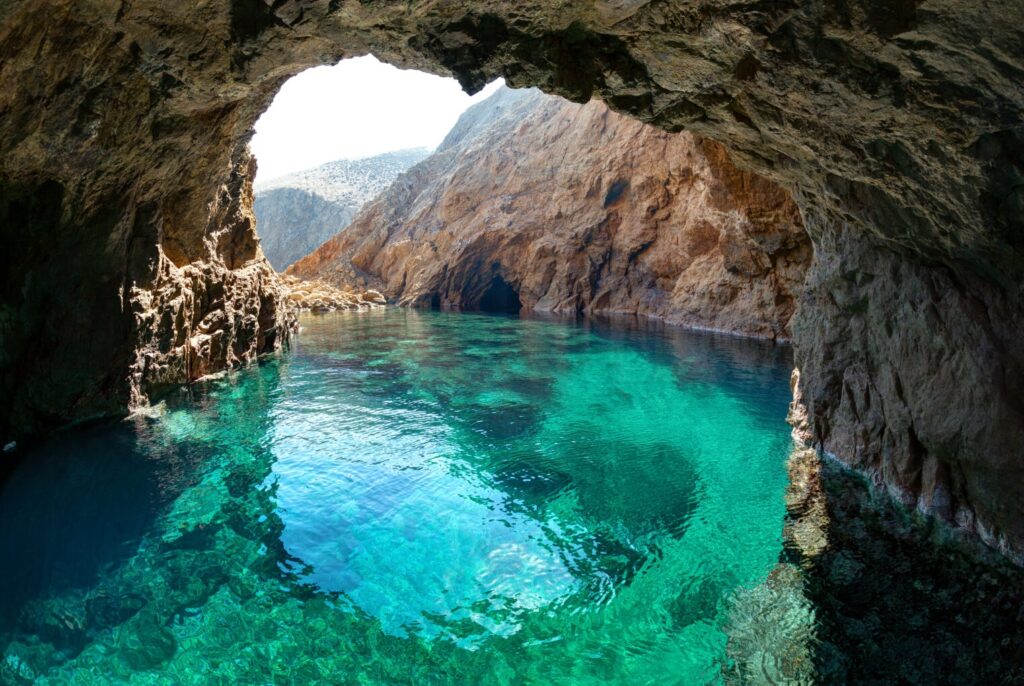The Cycladic island, next to Mykonos, has a special past that remains unknown to most.
Rineia is located very close to Delos and Mykonos and has an area of 14 sq. km. A strait, only 1 km wide, separates the island from Delos and between them are two small rock islands: Mikros Rematiaris to the north and Megalos Rematiaris, further south, in which the ruins of a Hellenistic sanctuary and a three-aisled early Christian basilica are preserved.
The ancients called Rineia the Great Delos, while together with Delos, they were called Deles. In fact, in the Mykonian carols, Santa Claus comes from "the Kato Deles."
Rineia, Tragonisi, and the rock island Ktapodia have been included as a Special Protection Zone within the European network of protected areas Natura 2000.

Boats moor at the two ports of Kasari and Generali. On the islet, there are scattered farmhouses and five chapels. Most of the farmhouses are located near the chapel of Agia Triada, in front of an amazing sandy beach.
Here, a few ruins of the Hellenistic city and the sanctuary of Hercules are preserved. A nice path lined with dry stones leads to the settlement of Agia Triada, which starts from the little port of Kasaris.

In Rineia, those with their own boat discover many bays, inlets, and beautiful deserted sandy beaches. They are Abelia, Lygia, and Agia Triada in the west, Skinos in the south, Nataliotis, Karatines, Stena and Kasaris in the east and some smaller ones.
Rineia has a coastline of 43 km. The journey from Mykonos takes half an hour.
History
When the Athenians cleansed Delos in 425 BC, they moved the dead's bones to Rineia, and the island became the necropolis of Delos.
The bones were thrown into the so-called Pit of Catharsis, which was discovered in 1898-1900 by Dimitrios Stavropoulos, the first Superintendent of Antiquities of the Cyclades.

After the Purification, pregnant women and those about to die were taken from Delos to Rineia to give birth and those about to die.
To the west was the city of the Rineians and several important sanctuaries. Throughout the island, there were scattered farmhouses. The Pit and the other burials were in an enclosure until 425 BC.

The finds cover the period from the Mycenaean to the Classical Age. Many ancient cemeteries exist, but the graves were found robbed. Roman cisterns from the 2nd Century BC were discovered on Kato Gournali beach.
Archaeologists have identified an ancient city abandoned at the end of the 5th century in the northwest of the island (Ampelonas).

Tragonisi and Ktapodia
Tragonisi is about a mile off the eastern shores of Mykonos, and its rocky shores have impressive formations. It is an inaccessible island, but a cove forms in the northeast where boats can moor when there is no wind.
On that side is also an awe-inspiring cave through which small boats or inflatables can pass when there is no wave. For this reason, there are other smaller caves in Tragonisi, and Monachus monachus seals come here.

About 5 miles southeast of this island are the rocky islands of Ktapodia (the Mykonians call them Stapodia ). Here, strong winds usually blow, and the approach is difficult.
And seals come to Ktapodia. In Ktapodia, it is worth going wall diving. The seabeds on the surrounding reefs are truly impressive.
Valy Vaimaki is a columnist for Travel. Translated by Paul Antonopoulos.
READ MORE: Your Guide to Karpathos.


